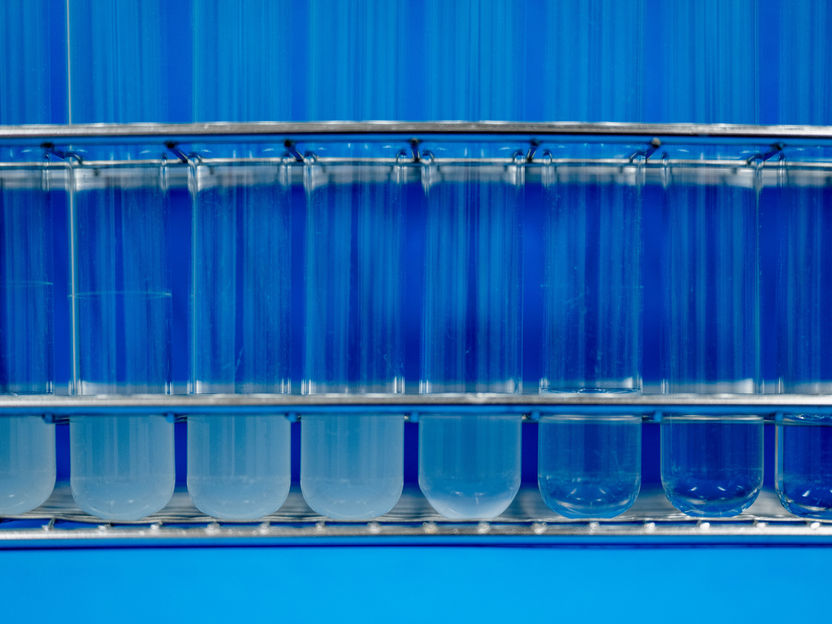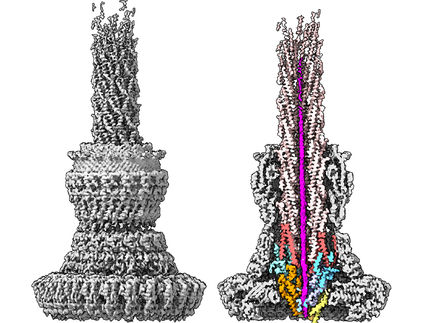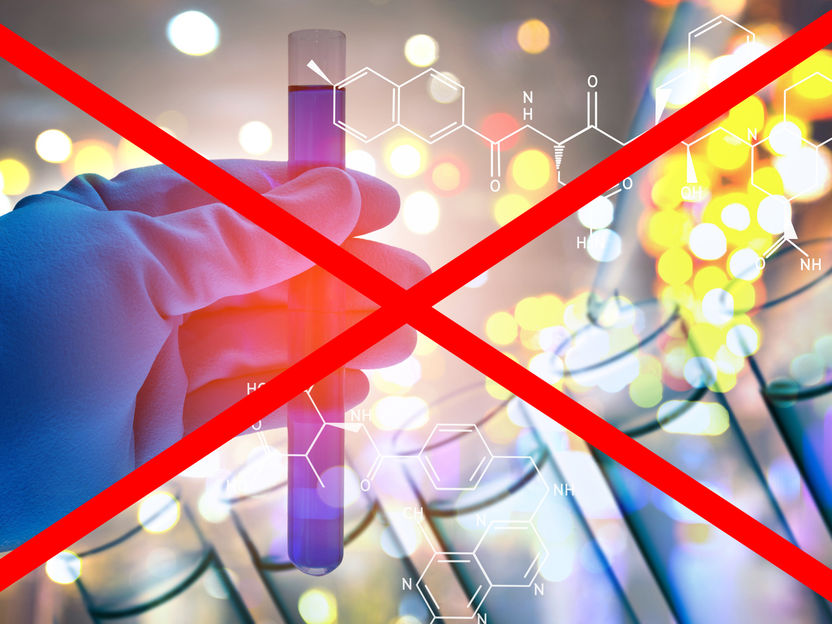Antibiotics: Same Target, Different Effects
New antimicrobial agents with great potential
Even if they attack the same target in the bacterial cell, the cellular response to different antibiotics can vary.

Increasing concentrations of antibiotics - from left to right - inhibit the growth of bacteria, recognisable by the turbidity.
© RUB, Marquard
There is an urgent need for new antimicrobial strategies to keep pathogens in check. This applies specifically to Gram-negative bacteria, which are protected from antibiotic intervention by a thick second membrane. Microbiologists from the Faculty of Biology and Biotechnology at Ruhr University Bochum, Germany, have compared the effects of five different substances that inhibit the formation of this outer membrane. As well as the expected consequences, they found a range of additional cellular responses in the bacterial cell, depending on the substance. Published on March 6, 2024, in the Journal of Biological Chemistry, these findings can help to better assess the application potential of such inhibitors.
The outer membrane of Gram-negative bacteria is a target for antibiotics
For more than a hundred years, bacteria have been classified into Gram-positive and Gram-negative pathogens according to their staining patterns. Gram-negative bacteria present a significant challenge, because they are enveloped by a second membrane that prevents many antibiotics from penetrating. “On the other hand, the enzymes that produce this outer membrane are unique and are therefore promising targets for specific antibiotics against this group of bacteria,” explains Professor Franz Narberhaus, holder of the Chair of Microbial Biology and study leader.
Key enzyme can be inhibited
The enzyme LpxC, which catalyzes the first irreversible step in the biosynthesis of the outer membrane of Gram-negative bacteria, is a highly promising target for the development of antibiotics. In order to determine how the model bacterium Escherichia coli reacts to the blocking of this enzyme, the researchers compared the cellular response to five different LpxC inhibitors. All five substances were able to bind to LpxC and inhibit this enzyme, which led to an accumulation of inactive LpxC in the bacterial cells. In addition, the bacteria were killed by all five substances, although the efficiency varied considerably.
Same same but different
Although all inhibitors target the same site, a number of compound-specific differences were observed in the bacterial response to treatment. Four of the compounds altered the balance in membrane composition, a sign of acute membrane stress. Some substances induced a general stress response or interfered with metabolic pathways that aren’t directly related to membrane biosynthesis. “The takeaway for us is that we should look closely at what is happening in the bacteria before introducing such substances,” cautions Professor Julia Bandow, Head of the Center for Systems-based Antibiotics Research CESAR, where some of the experiments were conducted. Even if the same enzyme is inhibited, it doesn’t automatically follow that the cellular responses of the bacteria are identical.
New antimicrobial agents with great potential
Unfortunately, all LpxC inhibitors available to date are unsuitable for clinical application due to side effects in humans and animals. We have reason to be optimistic, however, as a new LpxC inhibitor described a few months ago combats bacterial infections extremely efficiently and is free of side effects, at least in animal models. “We’re now keen to test how bacteria react to this substance,” says Franz Narberhaus. In the future, the bacterial response to other active substances that attack at earlier or later stages of outer membrane biosynthesis will also be investigated. Despite the great potential of such antibiotics, little is known about their mechanism of action and the bacterial reaction to them.
Original publication
Anna-Maria Möller, Melissa Vázquez-Hernández, Blanka Kutscher, Raffael Brysch, Simon Brückner, Emily C. Marino, Julia Kleetz, Christoph HR. Senges, Sina Schäkermann, Julia E. Bandow, Franz Narberhaus; "Common and varied molecular responses of Escherichia coli to five different inhibitors of the lipopolysaccharide biosynthetic enzyme LpxC"; Journal of Biological Chemistry





















































